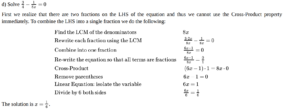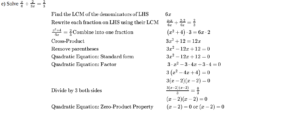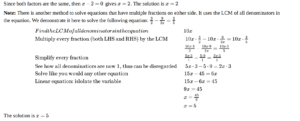Solving Fractional Equation
A fractional equation is an equation involving fractions that has the unknown in the denominator of one or more of its terms.
To solve a fractional equation, first eliminate the fractions by multiplying both sides of the equation by the least common denominator (LCD) of every term. We can do this because multiplying both sides of an equation by the same quantity (the LCD in this case) does not unbalance the equation. With the fractions thus eliminated, the equation is then solved as any nonfractional equation.
The following are examples of fractional equations:
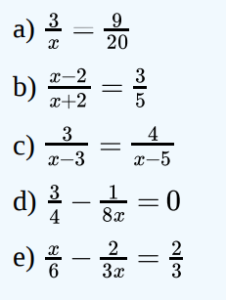
The Cross-Product property can be used to solve fractional equations.
![]()
Using this property we can transform fractional equations into non-fractional ones. We must take care when applying this property
and use it only when there is a single fraction on each side of the equation. So, fractional equations can be divided into two
categories.
Single Fractions on Each Side of the Equation
Equations a), b) and c) in the above example fall into this category. We solve these equations here.



Note: If you have a fractional equation and one of the terms is not a fraction, you can always account for that by putting 1 in the
denominator.
For example:
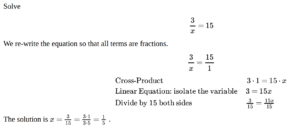
Multiple Fractions on Either Side of the Equation
Equations d) and e) in the above example fall into this category. We solve these equations here.
